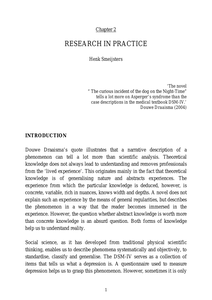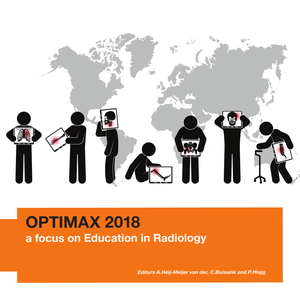In maart 2011 dreigde Muammer Gaddafi van Libya duizenden onschuldige burgers van de stad Benghazi uit hun huizen te halen om hen te vermoorden. De Veiligheidsraad van de Verenigde Naties verwees de situatie door naar het Internationaal Strafhof in Den Haag, dwong een no-flyzone af en gaf de NAVO een mandaat om burgers te beschermen with all necessary means, met de uitzondering van grondtroepen. Deze operatie was snel, robuust en effectief. Het principe van The Responsibility to Protect (R2P) -de verantwoordelijkheid van de internationale gemeenschap om genocide, misdaden tegen de menselijkheid, etnische zuivering en oorlogsmisdaden te voorkomen en te stoppen- werd voor het eerst volledig toegepast. Is R2P daarmee een norm geworden? Dit onderzoek plaatst de casus Libië in het model van de "Norm Life Cycle" (de levenscyclus van een norm) van de Constructivistische theoretici Finnemore en Sikkink (1998). Libië toont aan dat R2P nu een tipping point (omslagpunt) heeft bereikt, en zich van de fase norm emergence (opkomende norm) naar de fase norm cascade heeft verplaatst. Er is echter een spanning ontstaan: de terughoudendheid van de Veiligheidsraad om R2P toe te passen in Syrië (2012) wijst de andere kant uit. Er is dus nog een lange weg te gaan, voordat R2P als een internalised norm (vanzelfsprekende norm) kan worden beschouwd. ABSTRACT In March 2011, Muammar Gaddafi of Libya threatened to pull thousands of civilian protesters in the city of Benghazi out of their homes and kill them. The Security Council of the United Nations referred the crisis to the International Criminal Court, imposed a no-fly zone and provided NATO with a mandate to protect civilians by all necessary means, with the exception of ground troops. This operation was fast, robust and effective. It also marked the first time that the Responsibility to Protect (R2P) principle was fully implemented, being the responsibility of the international community to prevent and respond to genocide, crimes against humanity and war crimes if the state in question is not able or not willing to protect its citizens itself. Has R2P become a new norm? This study situates the case of Libya in the 'Norm Life Cycle' model of Constructivist theorists Finnemore and Sikkink (1998). It suggests that R2P has reached a tipping point and has moved from the stage of norm emergence to the stage of norm cascade. However, a certain tension still exists: the reluctance of the Security Council to implement R2P again in the crisis in Syria (2012)points in the opposite direction. This suggests there is still a long way to go before R2P becomes an internalised norm in the international community.
DOCUMENT

The knowledge base for Social Work is strengthening. Underpinning of Social Work deriving from scientific research is necessary given the growing complexity of the work and its context. How this research should be conducted and to what type of outcomes it must lead, is part of an ongoing debate. In the Netherlands, practice-based research at Universities of Applied Sciences (UAS) is a relative new approach. Social Work research groups at UAS assert to conduct practice-based research in order to contribute to knowledge and support the objectives of Social Work. The current study was carried out to obtain insight into the characteristics of this research approach. A sample of publications was analysed in terms of knowledge purpose, methodology, and level and type of participation. Results show a strong focus on producing descriptive knowledge and to a lesser extent on control knowledge, using primarily qualitative research methods, and with limited direct participation by stakeholders. In order to practice more what they preach the research can strengthen by doing more empirical research, by diversifying the research in terms of design and methods and increasing the level of participation of stakeholders
DOCUMENT

In many fields within management and organizational literature there is considerable debate and controversy about key theoretical concepts and their definitions and meanings. Systematic metaphor analysis can be a useful approach to study the underlying conceptualizations that give rise to these controversies and putting them in perspective. It can help identify the different ways a theoretical concept is structured and given meaning, provide insight into the way these different conceptualizations relate to each other, and show how these conceptualizations impact further theorization about the concept. This article describes the procedure for a systematic analysis of the metaphors used to conceptualize key theoretical concepts. To examine its usefulness, the authors apply the approach to the field of social capital, and in particular to the concept of ‘relationships’ in organizations. In the metaphor analysis of three seminal articles on social capital, the authors identify seven metaphoric concepts for relationships. The metaphors are illuminated as important for providing imagery that adds specific meaning in the process of authors theorizing about social capital like ‘tie’, ‘path’ and ‘bridge’. They add dynamics and controllability to the concepts by attributing an array of verbs like ‘to move between’ or ‘to use’ relationships. In addition, the metaphors allow for the attribution of specific characteristics to the concept of relationships that can be used as variables in theory construction, such as the strength of a relationship or the ‘distance’ between people. These insights are useful in exploring and reconciling differences in social capital definitions.
DOCUMENT

This paper presents a design-based research study on the reporting of intellectual capital in firms. It combines the designing of an organizational development (OD) intervention with the testing of the intervention using an action research methodology. A growing gap between theory-based research and practice has been identified as one of the reasons for a lack of renewal in the field of OD. Design-based research (DBR) has been proposed as a methodology that can help bridge the gap between research and practice. The purpose of the paper is to illustrate what a comprehensive methodology for design-based research can look like and to demonstrate the type of OD knowledge this research can produce. The design approach is used to design and test a tool for the reporting of intellectual capital within firms as an OD intervention into the individual and collective sensemaking of managers.
DOCUMENT

This paper presents an approach to organizational research that aims to produce research results that are both relevant and rigorous. The research approach combines the designing of a management tool with the testing of the tool using an action research methodology. The lack of relevance in organizational research is a much debated issue in literature. A design approach has been proposed to help bridge the gap between research and practice. However, in organizational research, there is little empirical evidence how design-based research works in practice and it is unclear how this type of research is best structured. The purpose of the paper is to illustrate what a comprehensive methodology for design-based research can look like and how an action research methodology can be used to test the design in practice.
DOCUMENT

This paper addresses the following question: What is the current opinion and conception of ordinary Dutch people regarding the influx of refugees from the Middle East, and how can local government formulate a policy on this issue?
DOCUMENT

The road to science for the arts therapies requires research on the full breadths of the spectrum, from systematic case studies to RCTs. It is important that arts therapists and arts therapeutic researchers reflect on the typical characteristics of each research paradigm, research type and research method and select what is appropriate with regard to the particular research question. Questions rather differ. Finding out whether a certain intervention has a particular effect with a large group of clients differs from wanting to know which change occurs at which moment by which interventions in the treatment of an individual client. Research in practice remains close to questions encountered by arts therapists in their daily practice. It concerns questions arts therapists have about their lived experience of acting due to the complexity and variability of practice. By carrying out research in practice that links up with those questions, evidence evolves; evidence that enables the professional to proceed and that makes explicit what often remains implicit and unsaid. What is explicit can be communicated, can be criticised and tested. The professional himself does the road to science of the profession. The investment in professionals’ research in practice is the motor of knowledge-productivity that bridges the theory-practice gap. Research in the arts therapies should lead to ‘knowledge’ in which the ‘art’, nor the ‘subject’ of therapist and client have been lost.
DOCUMENT

The use of Augmented Reality (AR) in industry is growing rapidly, driven by benefits such as efficiency gains and ability to overcome physical boundaries. Existing studies stress the need to take stakeholder values into account in the design process. In this study the impact of AR on stakeholders' values is investigated by conducting focus groups and interviews, using value sensitive design as a framework. Significant impacts were found on the values of safety, accuracy, privacy, helpfulness and autonomy. Twenty practical design choices to mitigate potential negative impact emerged from the study.
MULTIFILE

The generalist-plus-specialist palliative care model is endorsed worldwide. In the Netherlands, the competencies and profile of the generalist provider of palliative care has been described on all professional levels in nursing and medicine. However, there is no clear description of what specialized expertise in palliative care entails, whereas this is important in order for generalists to know who they can consult in complex palliative care situations and for timely referral of patients to palliative care specialists. Objective: To gain insight in the roles and competencies attributed to palliative care specialists as opposed to generalists. Methods: A scoping review was completed based on PRISMA-ScR guidelines to explore the international literature on the role and competence description of specialist and expert care professionals in palliative care. Databases Embase.com, Medline (Ovid), CINAHL (Ebsco) and Web of Science Core Collection were consulted. The thirty-nine included articles were independently screened, reviewed and charted. Thematic codes were attached based on two main outcomes roles and competencies. Results: Five roles were identified for the palliative care specialist: care provider, care consultant, educator, researcher and advocate. Leadership qualities are found to be pivotal for every role. The roles were further specified with competencies that emerged from the analysis. The title, roles and competencies attributed to the palliative care specialist can mostly be applied to both medical and nursing professionals. Discussion: The roles and competencies derived from this scoping review correspond well with the seven fields of competence for medical/nursing professionals in health care of the CanMEDS guide. A specialist is not only distinguished from a generalist on patient-related care activities but also on an encompassing level. Clarity on what it entails to be a specialist is important for improving education and training for specialists. Conclusion: This scoping review adds to our understanding of what roles and competencies define the palliative care specialist. This is important to strengthen the position of the specialist and their added value to generalists in a generalist-plus-specialist model
DOCUMENT

This year, OPTIMAX was warmly welcomed by University College Dublin. For the sixth time students and teachers from Europe, South Africa, South America and Canada have come together enthusiastically to do research in the Radiography domain. As in previous years, there were several research groups consisting of PhD-, MSc- and BSc students and tutors from the OPTIMAX partner Universities or on invitation by partner Universities. OPTIMAX 2018 was partly funded by the partner Universities and partly by the participants.
DOCUMENT
